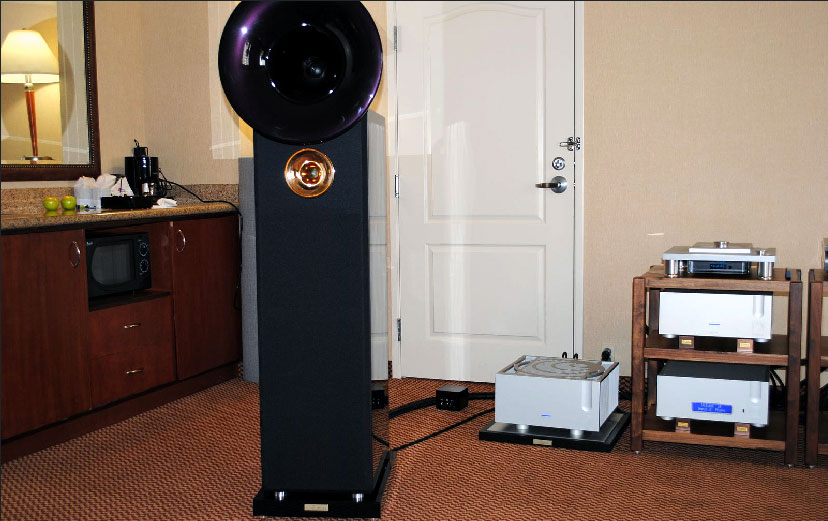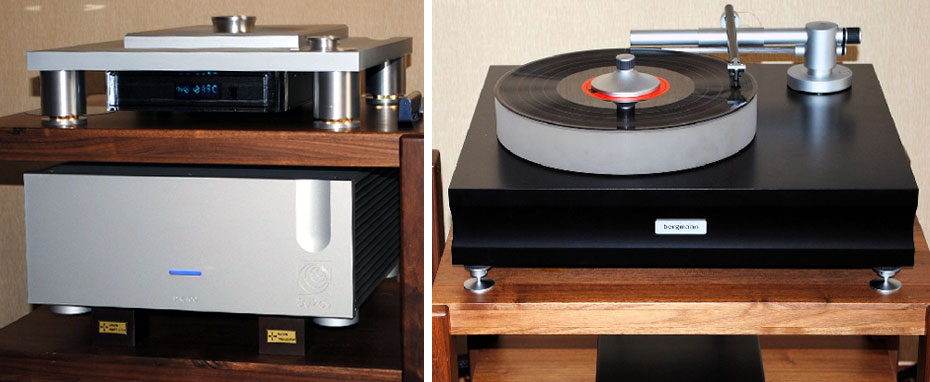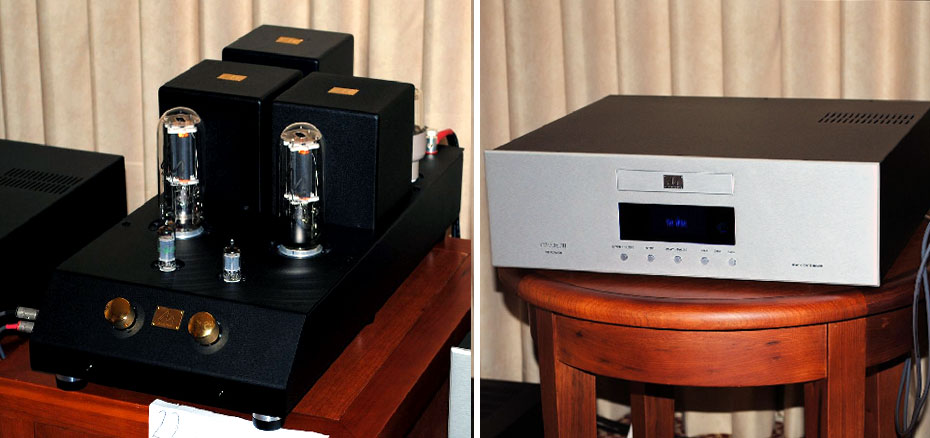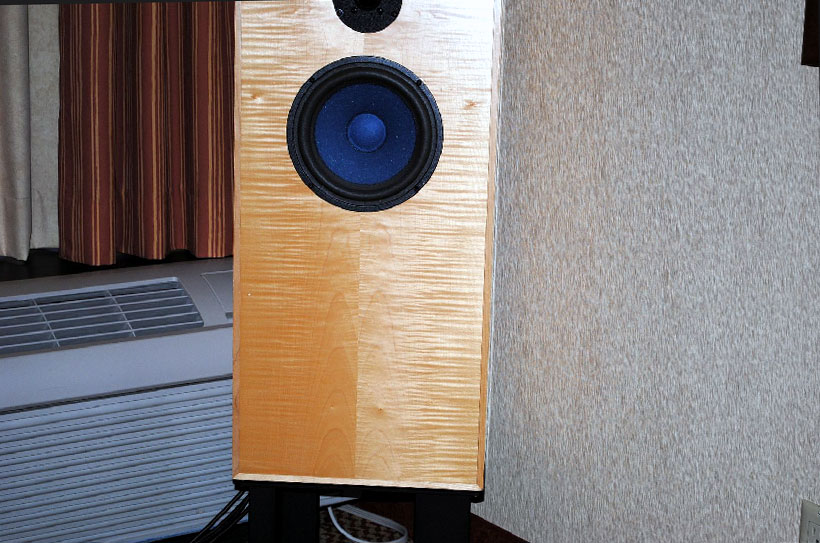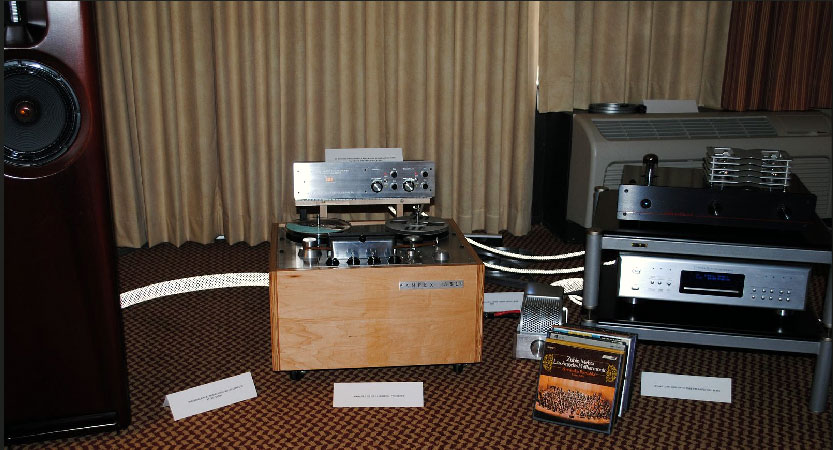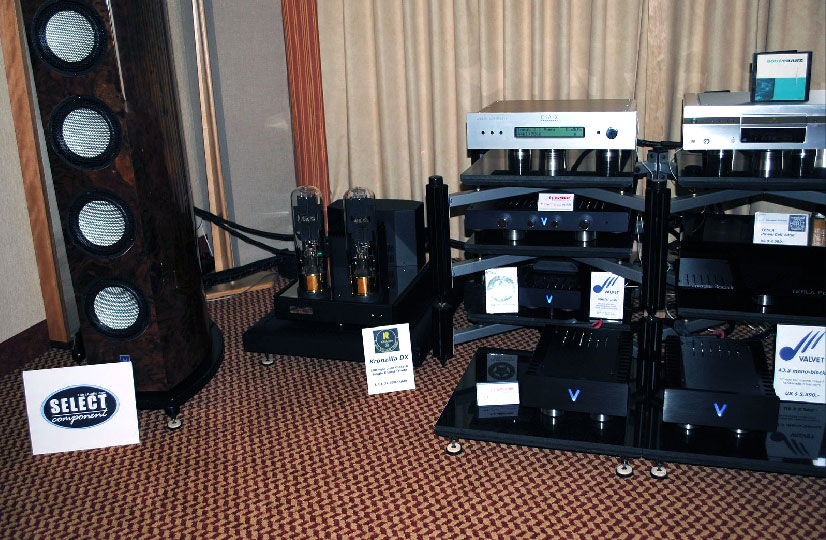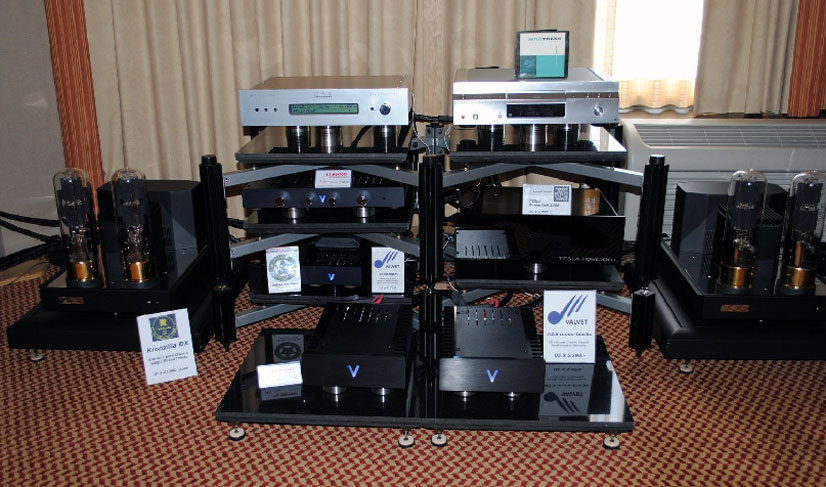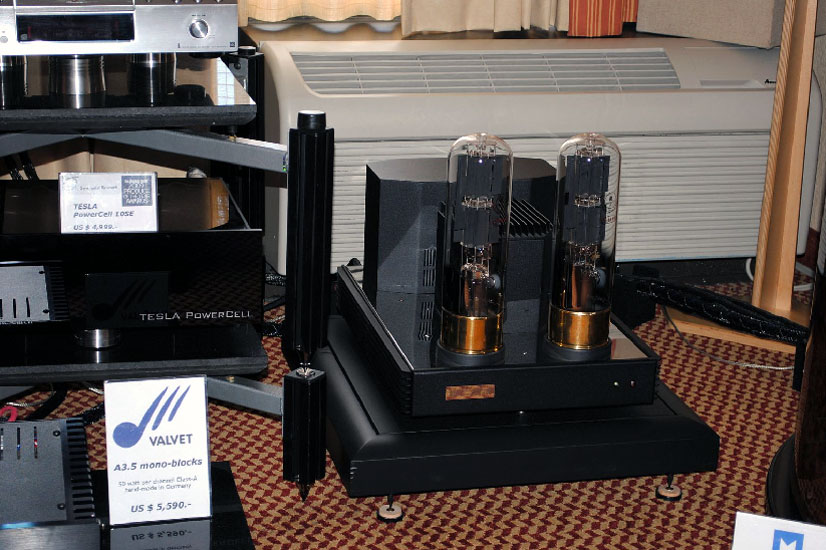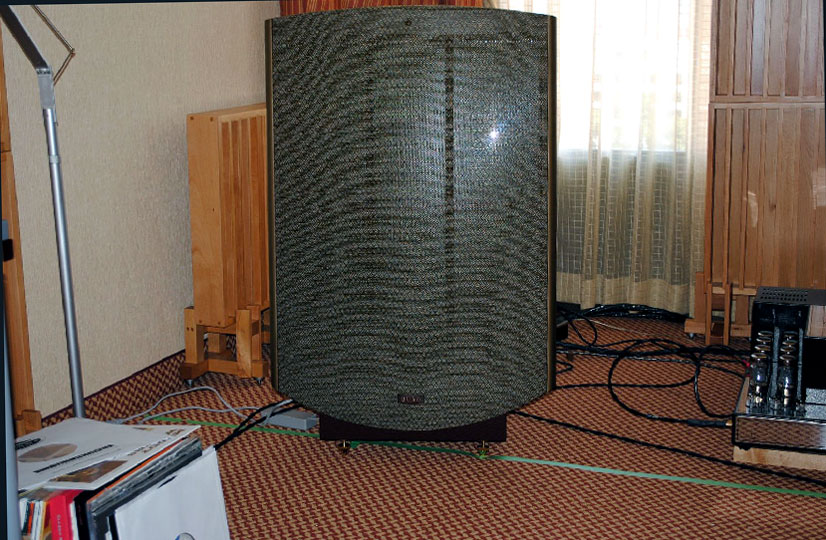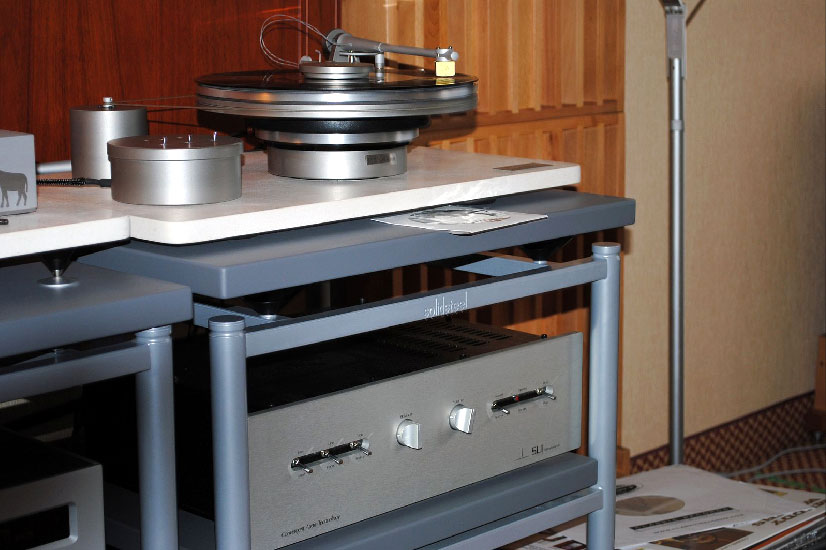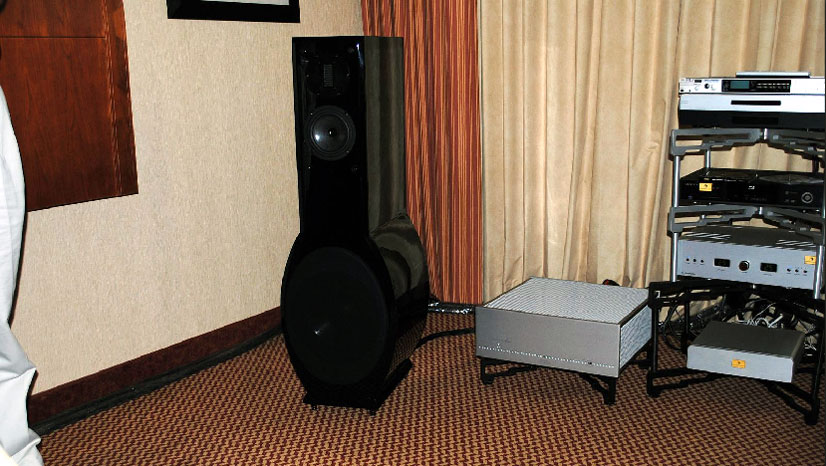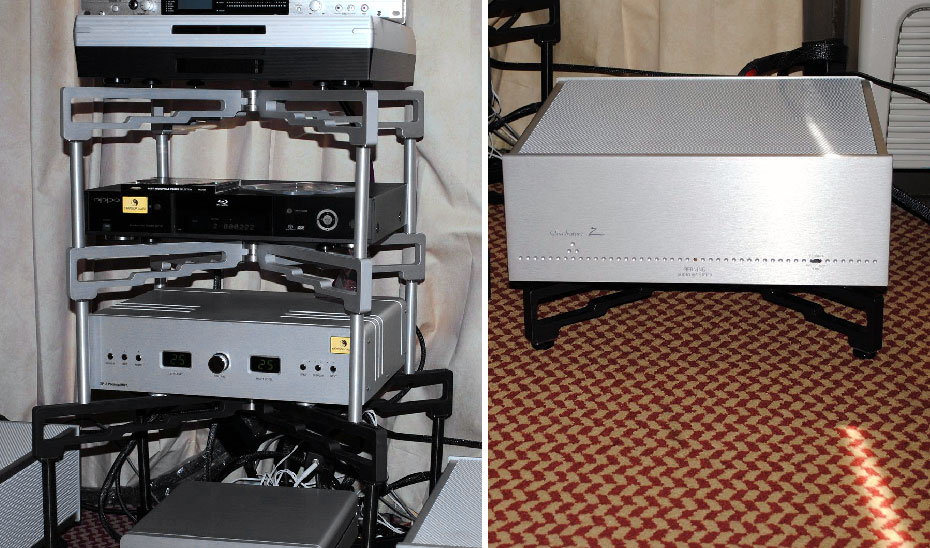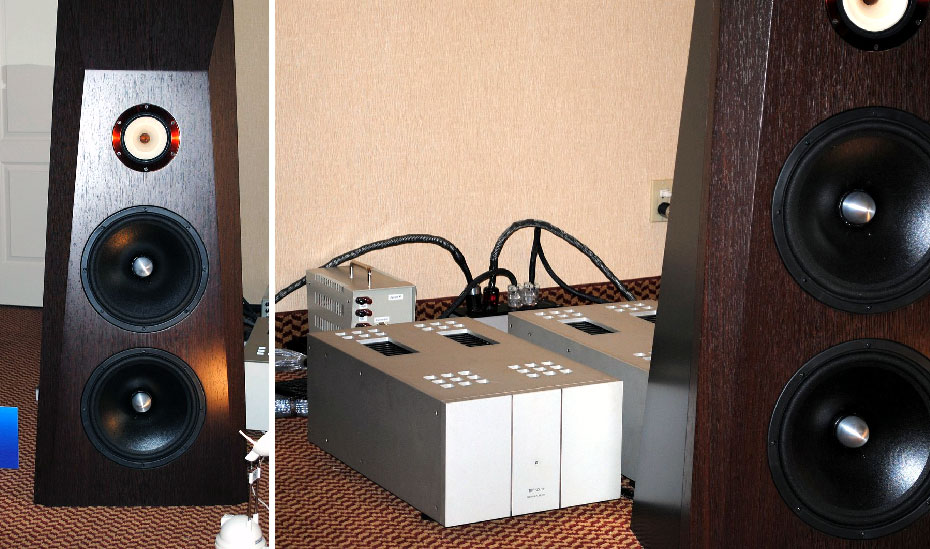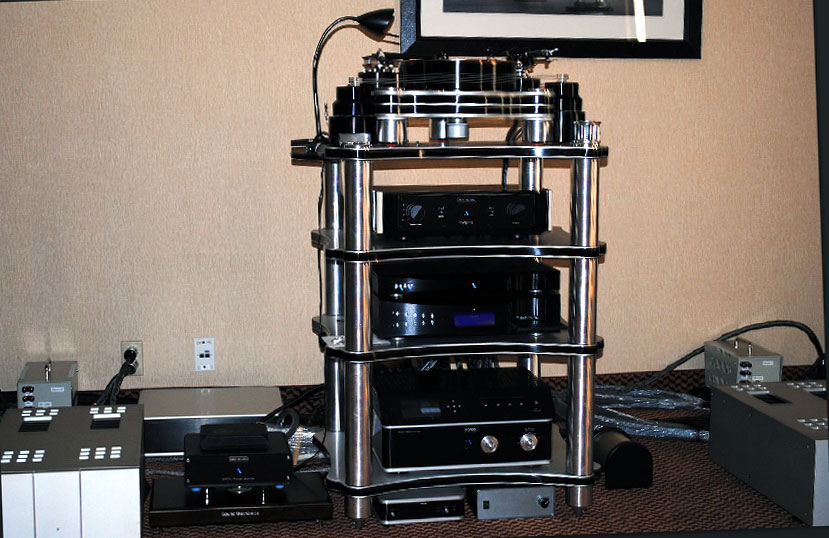Loggie Audio
Equipment: Acapella High Violoncellos II speakers; Ypsilon Aelius Hybrid Mono Amps, PST 100 Mk II preamp, and VPS 100 phonostage; Stage III cables, Weizhi power conditioning, Bergman Sindre Turntable and integral straight line tonearm with an Ortofon A-90 cartridge.
This is what I personally consider to be the state-of-the-art with respect to what can be accomplished outside a concert hall. When this system is “right”, it is extremely difficult to beat without spending outrageous amounts of money or perhaps even more than outrageous amounts. Starting with the speakers, these are probably the “sweet spot” in the Acapella line. They are the second least expensive Acapella speakers which incorporate their plasma tweeter which is bar none the best tweeter that I have ever heard. In the past, the Violon models have been a difficult load for most amps to drive, low efficiency coupled with very low impedance at some low bass frequencies. The High Violoncellos II have solved at least part of this problem with changes to the crossover and changes to the woofers to raise the average impedance at all frequencies to about 8 ohms, making them an easier load for most amps. They have three 11-inch woofers, larger bass cabinets and built-in de-coupled platform base. I heard these at CES driven by a single pair of Einstein OTL’s and the single pair sounded much better than two pairs had in the past. Likewise, I am normally not particularly enamored of hybrid amps; however, the use of Siemens C3g input and an EZ81 rectifier have worked magic in the Ypsilon. At present, this is their best amp unless you need significantly more power. The PST 100 particularly in passive mode is as close to a straight wire with gain as I have heard and as others have said, the VPS 100 phonostage currently defines the pinnacle of the art. I have always been a fan of straight line air bearing tonearms and of air bearings on the platter. Based on my experience using an Ortofon A90 in a Rockport, I feel that a straight line arm is the way to maximize the sound of the cartridge. (Fred uses a pair of the Acapella Triolon Excalibur as his reference speakers. –Ed.)
What this adds up to is a system that is superbly matched and performs effortlessly. While the system is not perfect it can be stunning particularly on jazz and classical works. One of my top three systems at the CAS.
Audio Note UK
Equipment: CD3.1x/II and CD4.1x non-oversampling CD players, Jinro 211SE integrated amplifier and E/Lexus Signature speakers and Audio Note UK cabling. I had not previously encountered the Jinro, which is a 211-based single-ended design using copper internal wiring and an in-house wound 1:2 copper wired driver transformer on a HiB double C-core. The output transformer is also in house designed and wound with copper wire. The speakers are 98 dB Efficiency and have outboard crossovers.
Again, this is a spectacular system for a small to moderate sized room that allows corner placement of the speakers. It is true to the music and priced at less than $50K. While it does not do 32 Hz organ petals, properly coupled to the room, it will move prodigious amounts of air. (Again, Fred’s reference amplification for driving the Acapella Triolon Excalibur is the pair of Audio Note UK KEGON Balanced. –Ed)
deHavilland/Sonist
Equipment: deHavilland Mercury III linestage and KE 50A monoblock power amps, KE Engineering/ de Havilland Model 222 magnetic tape playback preamp used in conjunction with Ampex tube reel-to-reel deck, Sonist Concerto 3 speakers, Wireworld cabling.
We played an RCA tape of Monteux conducting Stavinsky’s Petroushka on the modified Ampex with excellent results. One of the standouts for me at the CAS.
Consensus Speakers
Equipment: Sony SCD9000ES transport, Audio Synthesis DAX Discrete, Valvet Soulshine preamp and A3.5 class A mono amps, KR Audio Kronzilla DX mono amps, Consensus Audio Conspiracy Speakers, Silencable Wizard cabling. The speakers use 5 ceramic drivers of equal size coupled with a smaller ceramic tweeter.
On Bela Fleck’s Cosmic Hippo CD, the bass was extremely good as was the banjo. This is a speaker that does an excellent job of handling transients and is characterized by low distortion and an abundance of detail.
Tone of Music Audio
Who would ever have thought to mate Quad electrostatics with electronics designed by Convergent Audio Technology and a Simon Yorke turntable? As strange as it may sound the combination was characterized by extremely fast transients, a nice tonal balance and spectacular detail. The exhibitor did a nice job of explaining the differences between the sonics of the two different Simon Yorke tables that he was showing; however, it would have been nice for the sake of comparison to have the same cartridge on both tables. (Can you ever satisfy a reviewer? –Ed.)
Stillpoints
The equipment consisted of Eficion F250 speakers, Berning Quadrature Z mono amps, Exemplar XP-2 preamp, Exemplar modified Oppo BP83 DVD player and Exemplar interconnects and speakerwire. Exemplar Audio is the brain child of John Tucker who is also the principal engineer for LSA. John has been around in high-end audio for over twenty years. While his specialty is tube circuits and horn speakers, he also has a broad knowledge of other areas, particularly the modification of other manufacturer’s equipment and the re-design of power supplies. I had previously heard and been very impressed with his modified Oppo BP83 which, for about $3K, is clearly competitive with products retailing for up to ten times more. Likewise, Stillpoints has been around for the last twenty years designing increasingly sophisticated isolation systems.
I began my listening with Oscar Peterson’s “We Get Requests”. The system did a nice job of reproducing the stage. Wire brushes on the drums were nicely rendered and very clear as was the sound of the drums. Piano was very realistic. It seemed like it would be nice to follow this with some vocals, so next we put on “Ella and Louie”. The original 1956 mono tracks had been re-mixed into a stereo recording. This disc did not disappoint, the system did an excellent job of recreating their voices. Female voices were exceptional.
This system would best be characterized as fast, low distortion and highly detailed with excellent leading edge, but not lacking in warmth. I attribute a fair amount of this to the Stillpoints equipment rack and isolation devices, combined with their new Forcefield cables.
The Lotus Group
Like John Tucker, Joe Cohen has been a fixture in high-end audio for many years. I have previously reviewed a number of the Acoustic Revive products which he imports. About three years ago at CES, he introduced a hand built paper cone driver from Japan, the Feastrex, in both Alnico and field coil versions for use in the design of single-driver crossoverless speakers. Joe’s early efforts were very promising but clearly had limitations at the frequency extremes. I believed at the time that the challenge would be to extend the bandwidth without losing the purity and coherence of the single speaker driver approach. The first iteration of the Granada full-range speaker was shown at the 2009 CES. While it clearly had promises, the complex digital crossover and choice of class D amps left something to be desired. By this year’s CES, things had improved dramatically. As of CAS, I believe that the design has truly matured or perhaps Joe has just found the right ancillary equipment to use with his speakers. I primarily credit three pieces of associated equipment which I believe are exceptional, the dCS Puccini SACD player and U-clock, the Steve McCormick SMc VRE-1 preamp and the Technical Brain 200-watt monoblock amps.
The Granada speaker is still essentially a one-way designed around a Feastrex Type II Field Coil driver with phosphor bronze frames with twenty coats of Urushi lacquer and Feastrex power supply. The speakers are crossed at 200 Hz via a Linkwitz Reilly slope to a dipolar woofers. The DSP system is fully 24 bit, 96K and allows the user to time align, correct linear and non-linear errors and also adjust for the room. A rear firing tweeter is used to correct power response.
By the second day, this very complex system was sounding very coherent. This was one of the three best systems that I heard at the CAS.
- (Page 1 of 1)

